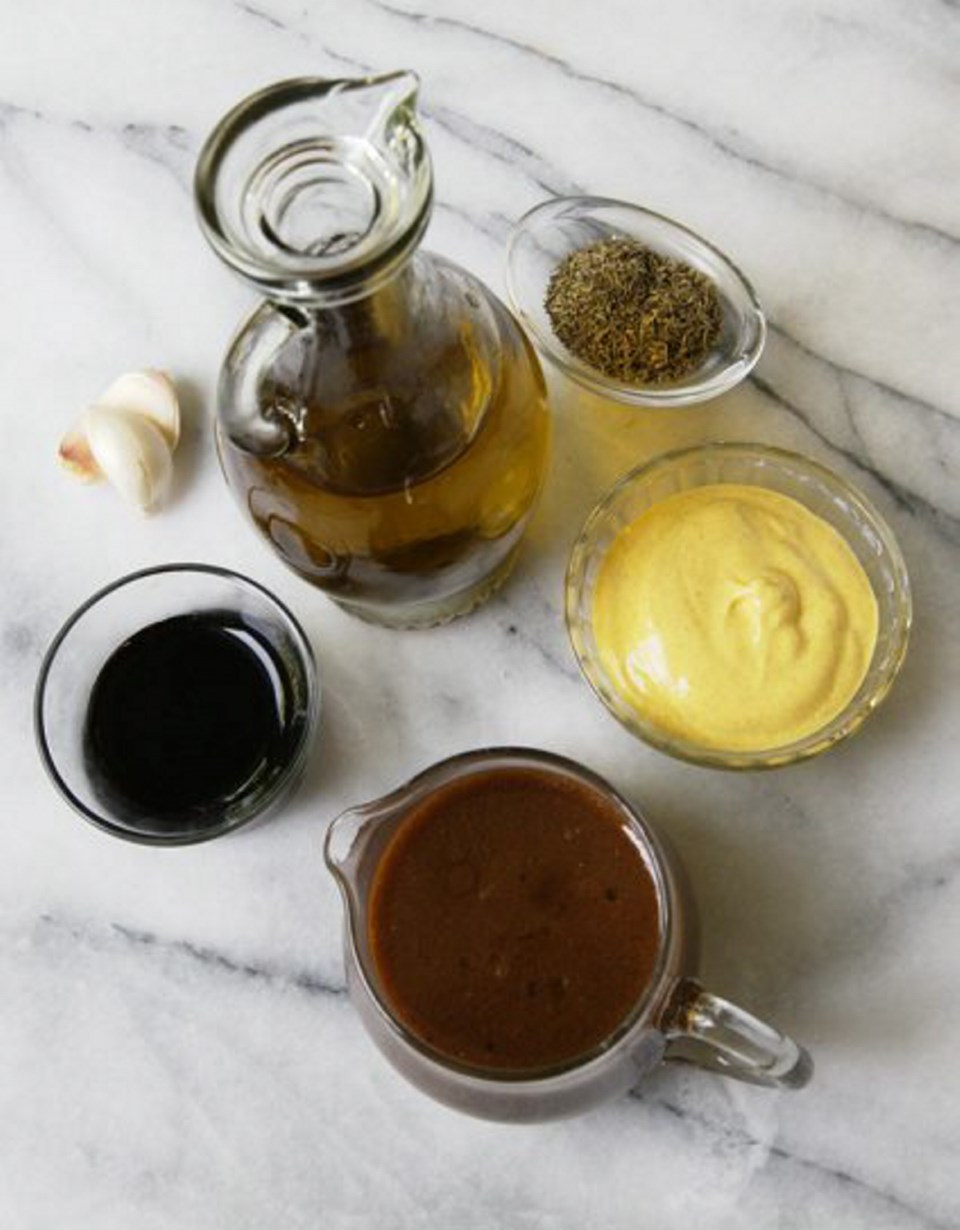 Dear Eric: I hope you can help me with this problem. I make an olive oil and balsamic salad dressing, usually three cups at a time, as I pack my own lunch and I like having it on hand.
Dear Eric: I hope you can help me with this problem. I make an olive oil and balsamic salad dressing, usually three cups at a time, as I pack my own lunch and I like having it on hand.
The problem is when I take it out of the fridge, the olive oil has often solidified and it takes time running it under hot water to be usable. Any suggestions?
Susan
In a followup email, Susan told me that, beyond balsamic vinegar, the oil she uses is extra virgin olive oil and she also adds fresh garlic, Dijon mustard, dried herbs and a bit of maple syrup to her salad dressing.
When I read that, it was clear to me that she was making vinaigrette, a blend of oil and vinegar or other acidic liquid, such as lemon juice, traditionally blended in a three-to-one ratio.
Depending on how tart the vinegar is, that ratio can go slightly lower, such as when using sweeter-tasting balsamic vinegar, which requires less oil to cut its acidity.
Flavourings, of course, can be added to vinaigrette, as Susan does, and that dressing can also be emulsified, a process that forms the oil and vinegar into a homogeneous mixture.
A key ingredient used in many types of vinaigrette that allows that to happen is Dijon mustard.
According to the Saskatchewan Mustard Development Commission website, saskmustard.com, mustard seed’s outer coating is a compound called mucilage.
It says that mucilage has the ability to absorb and hold liquid, making mustard a good emulsifying agent with the ability to hold liquids together that normally would not, such as oil and vinegar, with the latter essentially being flavoured water.
For emulsification to occur, the ingredients in vinaigrette have to be blended in a specific way, and enough mustard has to be added to hold things together.
It’s my belief that Susan is not using that technique and, despite adding Dijon mustard to her vinaigrette, the oil is separating as it sits in the refrigerator and settles on the top.
When that happens, the extra virgin olive oil, which is high in monounsaturated fat, partially solidifies in the cold of the refrigerator.
That is a perfectly natural thing to occur and does not harm the oil. But it means Susan has to warm her dressing when she takes it out of the refrigerator so it can blend again.
Susan also told me that she thought about leaving her dressing at room temperature, but didn’t think that would be safe because of the other ingredients she added.
She made the right call there. Just trace amounts of moisture in garlic and herbs can support bacterial growth in such things as flavoured oils and vinaigrettes that are left out at room temperature, even in a sealed bottle.
But Susan does not have to worry about that if she blends her vinaigrette correctly, which is a two-step process.
The first step is to place her vinegar, Dijon mustard and flavourings in a good-size mixing bowl and whisk them thoroughly with a fine wire whisk.
Step 2 is to dribble and whisk in the oil very slowly. The constant whisking during this process breaks the oil into tiny droplets that become suspended, creating emulsified vinaigrette.
When the vinaigrette is refrigerated, the extra virgin olive oil in it will cause the dressing to thicken, but because it’s emulsified, it will still be fluid enough to pour and use.
The balsamic vinaigrette (see recipe below) you see in today’s photo was made last Monday and was still emulsified when I took it out of the refrigerator on Thursday to take the photograph.
That said, Susan, when you make your dressing employing this method the next time, check it the following day.
If it appears some oil is still separating and rising to the top, simply give the jar a big shake to bring things back together.
Balsamic Vinaigrette
This tangy, slightly sweet vinaigrette can be used to dress such things as salad greens, ripe tomato slices and grilled vegetables. When making the vinaigrette, set your bowl on a dampened kitchen towel, as that should prevent the bowl from moving when you whisk in the oil.
Preparation time: A few minutes
Cooking time: None
Makes: About 1 1⁄8 cups
1⁄3 cup balsamic vinegar
1 Tbsp Dijon mustard
2 tsp maple syrup or honey
1 medium garlic clove, minced
• salt and freshly ground black pepper,
to taste
1⁄2 tsp dried herbs, such as basil, oregano and/or tarragon, or to taste
3⁄4 cup extra-virgin olive oil
Thoroughly whisk and combine all ingredients, except oil, in a medium bowl. Very slowly, dribble and whisk in the oil to create an emulsified dressing.
Transfer vinaigrette to a tight-sealing jar and refrigerate until needed. It will keep at least a week. If the vinaigrette has started to separate at some point during storage, to emulsify again, vigorously shake the jar, before opening and using.
Eric Akis is the author of eight cookbooks. His latest is The Great Rotisserie Chicken Cookbook (Appetite by Random House). His columns appear in the Life section Wednesday and Sunday.
[email protected]



